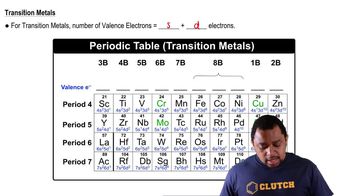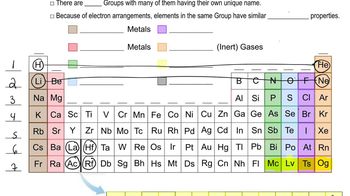Textbook Question
(c) An atom has the electron configuration 1s22s22p63s23p2. How many valence electrons does the atom have?
1106
views
 Verified step by step guidance
Verified step by step guidance



(c) An atom has the electron configuration 1s22s22p63s23p2. How many valence electrons does the atom have?
(a) True or false: The hydrogen atom is most stable when it has a full octet of electrons.
Consider the element silicon, Si. (c) Which subshells hold the valence electrons?
(b) Hafnium, Hf, is also found in group 4. Write the electron configuration for Hf.
(c) Ti and Hf behave as though they possess the same number of valence electrons. Which of the subshells in the electron configuration of Hf behave as valence orbitals? Which behave as core orbitals?
Write the Lewis symbol for atoms of each of the following elements: (c) Ar